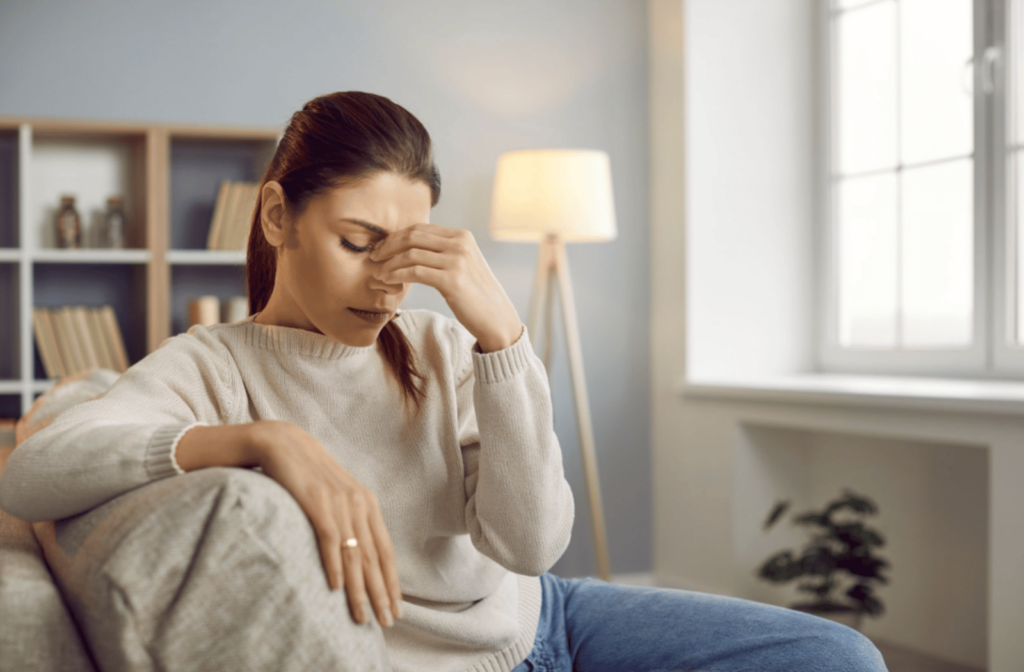When your eyes start to get scratchy and red, they can disrupt your comfort and your productivity. If this happens to you, you might be dealing with dry eye disease.
Dry eyes can have a few causes, and your optometrist can diagnose the correct one with an eye exam, but many times it’s because the meibomian glands in your eyelids are clogged. Your optometrist can help unclog meibomian glands and promote healthy tears by clearing biofilm from your eyelids or melting the blockages with a range of effective treatments.
What Is Dry Eye Disease?
Dry eyes typically mean something has happened to your tear film, the layer of moisture that acts as a protective shield for your eyes. There are 2 main types of dry eye disease:
- Evaporative dry eyes: The most common kind of dry eyes, where your tears are low quality and evaporate too quickly
- Aqueous-deficient dry eyes: Your body doesn’t create enough tears to keep your eyes refreshed.
About 90% of all dry eye cases are due to evaporative dry eye, which is predominantly caused by meibomian gland dysfunction (MGD). All this math adds up to the fact that most dry eyes are caused by something clogging up the meibomian glands.
Meibomian Glands
Your meibomian glands line your eyelids and make meibum, an oil essential to your tear health. You see, tears are more than simply water; they’re 3 layers of enzymes, lipids, metabolites, and electrolytes that keep your eyes comfortable and healthy. These layers are:
- An inner mucus layer holds the tear against the eye.
- A middle layer, mostly made up of water, keeps the eye moisturized while keeping away bacteria and debris.
- An outer oily layer keeps the tear smooth and stops the other layers from evaporating before they do their jobs. Meibum is crucial to this layer.
If your meibomian glands become inflamed or blocked, they can no longer secrete meibum, and your tears may evaporate right off your eye, leading to dry eye symptoms.
Dry Eye Risk Factors
Almost anyone can experience dry eyes, but there are a few risk factors that increase the chances:
- Age: Those over 65 might deal with dry eyes more often.
- Sex: Women are more likely to experience dry eye disease, likely due to hormone changes.
- Medications: Certain antihistamines, decongestants, and antidepressants can create ocular symptoms.
- Environment: Hot, dry, or windy places can cause your tear film to evaporate too fast.
- Autoimmune conditions: Conditions like Sjögren’s syndrome and rheumatoid arthritis can reduce the amount of tears you make.
- Inflammatory skin and eyelid disorders: Inflammation can increase the chance of meibomian glands clogging.
- Not blinking enough: Spending a long time on digital screens might make you blink less, drying out your tear film.
Dry Eye Symptoms
It’s easy enough to say dry eyes feel “dry,” but what does “dryness” feel like? Dry eye disease can cause a range of symptoms, such as:
- Blurriness
- Red eyes
- Stinging, burning, or scratchiness
- Light sensitivity
- Stringy mucus around the eyes
- Corneal damage
- Watery eyes (Especially for MGD, your body may make too many tears which all evaporate too fast to help)
Treatments for Dry Eye Disease
Since a majority of dry eye cases are due to MGD, a good treatment may be clearing out those glands which can’t make their meibum. Your optometrist can examine your tear health and eyelids, looking for signs indicating clogged meibomian glands.
BlephEx Lid Debridement
You clean the rest of your body, so why not your eyelids? BlephEx is an in-office treatment that gently scrubs away the biofilm that can form on the eyelids. This biofilm could eventually cause inflammation or clog the meibomian glands, much like how proteins and oil can clog the pores anywhere on your body.
Studies have shown that BlephEx can reduce dry eye symptoms and improve eyelid function with a few 6–8 minute sessions.
Warm Compress
For mild cases of dry eyes, you may be able to help loosen up clogged glands using a warm compress. The heat helps to melt the hardened oils, hopefully allowing the glands to secrete more meibum.
This method isn’t guaranteed to deal with severe clogs. Still, it may temporarily relieve frustrating dry eye symptoms at home.
A way to do it is to take a clean cloth and soak it in warm water. Wring it out and place it on your closed eyes for around 10–15 minutes. You can repeat this 3 to 4 times a day.
Alternatively, you can use hot and cold therapy masks like the I-Relief Mask to unclog glands.
Restasis Eye Drops
For aqueous-deficiency dry eye disease, Restasis can provide some relief. Restasis is a prescription eye drop that can promote your eyes’ natural tear production and reduce inflammation. It’s not an artificial tear, which simply adds moisture to your eye for quick relief from symptoms. Instead, Restasis treats the inflammation causing your dryness and irritation.
You should use Restasis twice a day, every day, at least 12 hours apart. It can take some time to see results, so it’s important to be patient. Your eye doctor can evaluate your symptoms to determine if this treatment is suitable for your condition.
Dry Eye Relief From Your Edmonton Optometrist
Dry eye disease can ruin your day with irritation and pain. At Total Focus Optometry, we offer dry eye treatments to help you see comfortably so you can get back to enjoying life. Book an eye exam today, and let us help you find your way back to comfortable sight.



